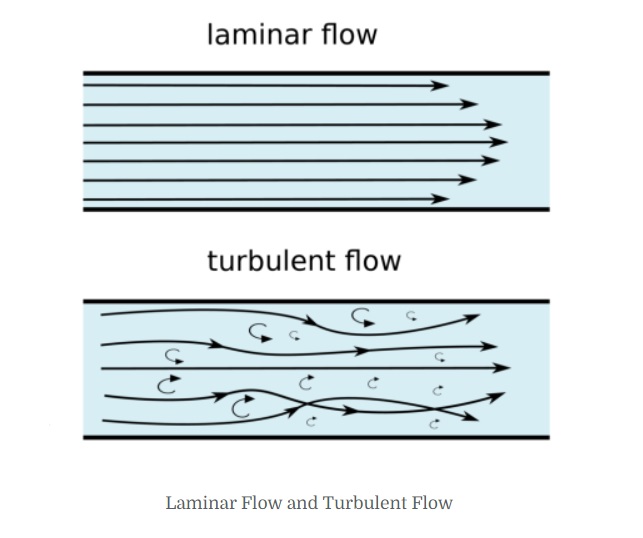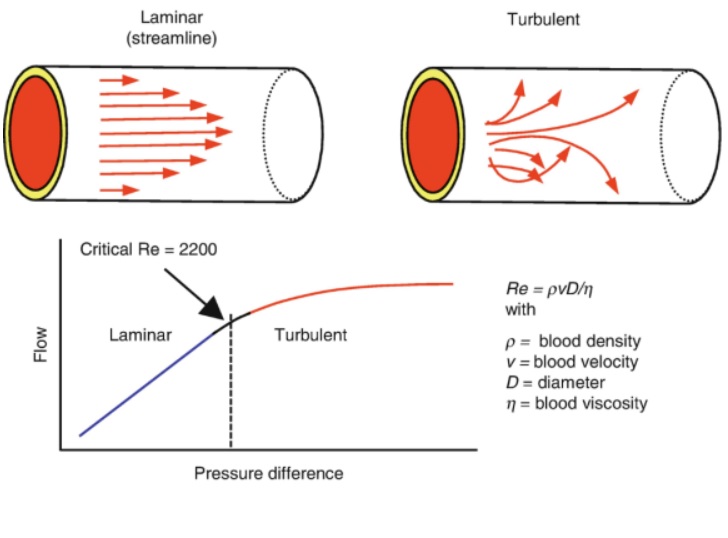A liquid moving through a closed channel such as pipe or between two flat plates is either laminar flow or turbulent flow, based on the velocity, pipe size (or on the Reynolds number), and fluid viscosity.

First, we will learn about laminar flow.
Laminar Flow
A laminar stream is the development of liquid particles along with distinct ways or streamlines, where all the streamlines out are straight and parallel. Subsequently, the particles move in laminar or layers skimming flawlessly over the adjoining layer.
Laminar flow happens in little diameter pipes in which liquid streams at lower speeds and high consistency. This kind of stream is likewise called a smooth-out stream or viscous Flow.
Laminar flow can be divided into three types:
- Unidirectional laminar flow
- Pulsatile laminar flow
- Oscillatory laminar flow
The common instances of the laminar stream are oil moving through a thin tube, blood course through capillaries, and smoke ascending in a straight way from the incense stick. Nonetheless, the smoke changes into the turbulent flow in the wake of ascending to a little tallness as it eddies from its regular path.

Turbulent Flow
Turbulent flow is characterized as the stream where the liquid particles move in a zigzag manner. Because of the development of liquid particles in a zigzag manner, the development of eddies takes place, which is liable for high energy loss.
In the turbulent stream, the speed of the liquid at a point consistently adjusts in magnitude and direction. The turbulent flow tends to occur in large diameter pipes in which fluid flows at high speed.
The principle apparatus accessible for the analysis of turbulent streams is CFD analysis. CFD is a part of liquid mechanics that utilizes calculations and mathematical investigation to break down and take care of issues that include turbulent fluid flows.
It is generally acknowledged that the Navier-Stokes equation or simplified Reynolds-averaged Navier-Stokes equations are the reason for basically all CFD codes.
The kind of stream is determined by a non-dimensional number called the Reynolds number for a pipe flow.
Re = (VD/v)
Where,
D = Diameter of pipe
V = Mean velocity of the flow in pipe
v = Kinematic viscosity of fluid
I hope you have enjoyed this article. If you have any questions, please comment below.
